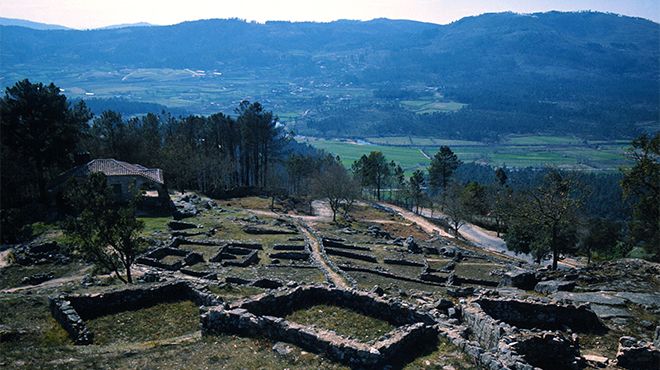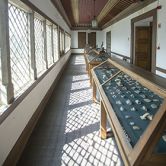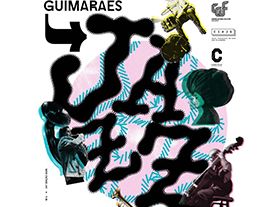Citânia de Briteiros

Archaeology
Situated a few kilometres from Guimarães, on top of the São Romão hill above the Ave River valley, the Citânia de Briteiros surprises the visitor with its scenic beauty and because it is one of the most expressive protohistoric settlements of the Iberian Peninsula, due to the dimension and monumentality of its walls, urbanism and architecture.
The still incipient traces of the organization of a "city" are clearly visible in the streets protected by a set of walls, inside which the circular or rectangular dwellings, sometimes arranged in small "blocks", were sheltered.
The Citânia de Briteiros is one of the paradigmatic sites in the History of Portuguese and Peninsular Archaeology. Its study began in 1874, when Francisco Martins Sarmento directed the first campaign of archaeological works, which continued in the following years. In the 20th century, the excavation, or restoration, campaigns were retaken by various archaeologists and, as a result of successive works, an extensive area of ruins can be seen today, both on the upper platform (acropolis) and on the eastern slope, but the settlement's subsoil still hides many secrets and valuable scientific information.
The initial phase of the use of the São Romão hill dates back to the Late Neolithic and Chalcolithic period, when various panels with rock engravings were carved on the granite cliffs of the eastern slope. As a habitat, the site's occupation can be dated to the beginnings of the 1st millennium BC, and it is part of the period designated as the Atlantic Bronze Age. However, the Citânia's golden age dates back to the 2nd century BC, and it was still inhabited after the Peninsular Northwest was integrated in the Roman Empire, during the 1st and 2nd centuries AD. In the 10th century, a small Christian hermitage would be built in the acropolis, among the debris of the old settlement.
The ruins of the Citânia, its subsoil and the objects collected bear witness to millennia of history. Different materials that bear witness to this occupation can be seen at the Museu da Cultura Castreja (Museum of Castro Culture), at the Solar da Ponte, in Briteiros.
4800 Guimarães
Winter: 10 a.m-12.30 p.m. / 2 p.m.-5 p.m.;
Summer: 10 a.m.-12.30 p.m. / 2.p.m-6 p.m.;
Closed: 1 January, Easter Sunday and 25 December
- Total
- Total
- Partial
- Shop
- Bar/Café
- Toilets
- Information panels
- Key
- Interative and audiovisual presentations
- Items for tactile exploration
- Motor disability
- Mental disability
- Mental disability










 Explore
Explore 
 Remember and Share
Remember and Share 


